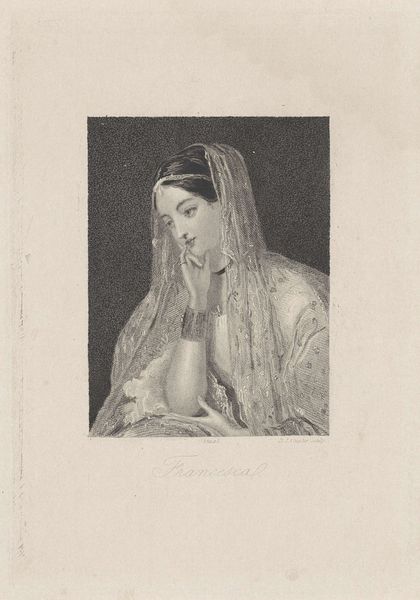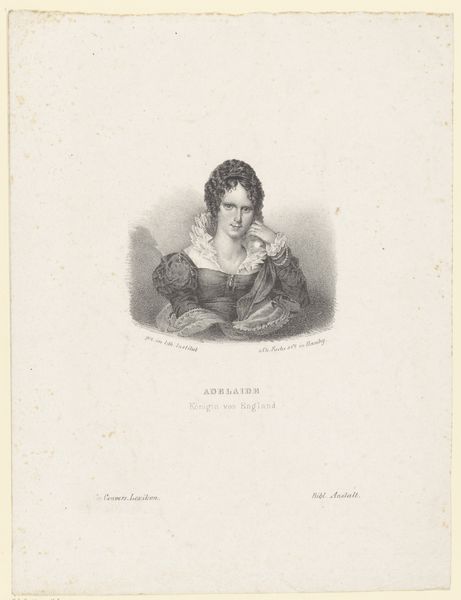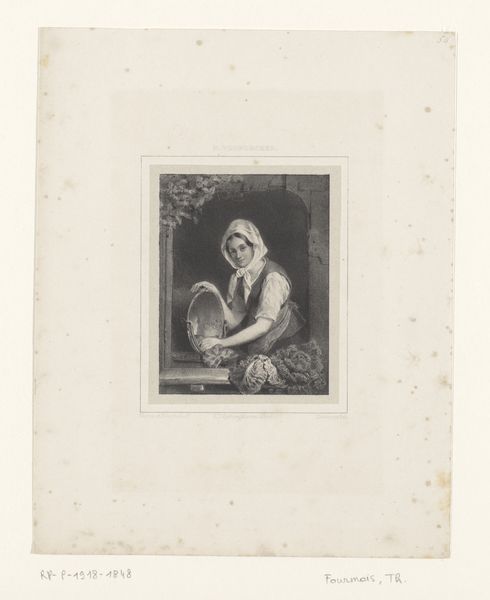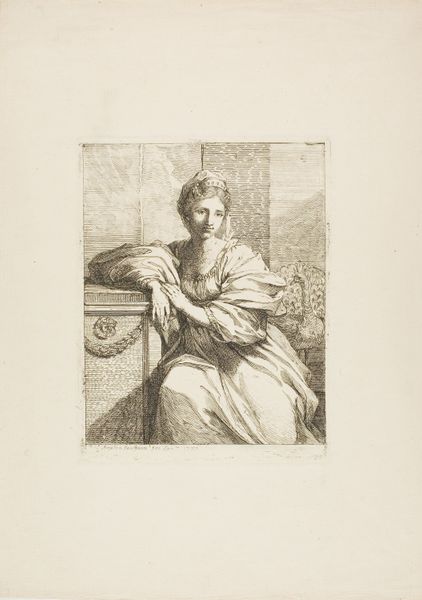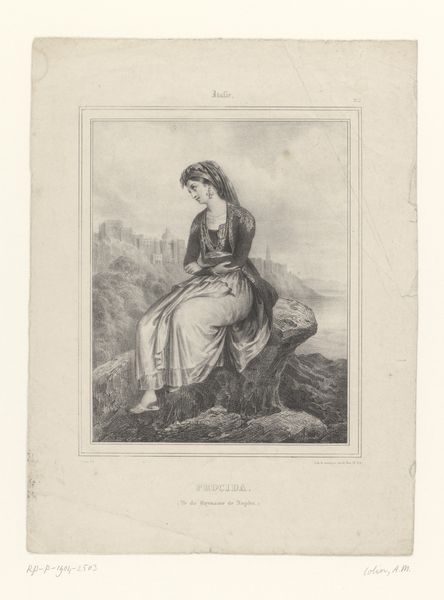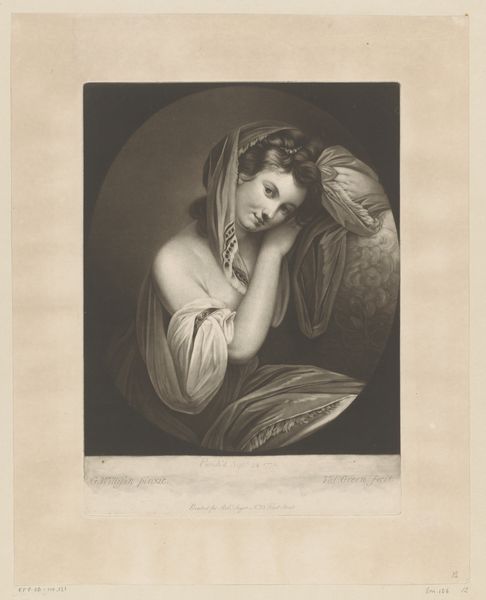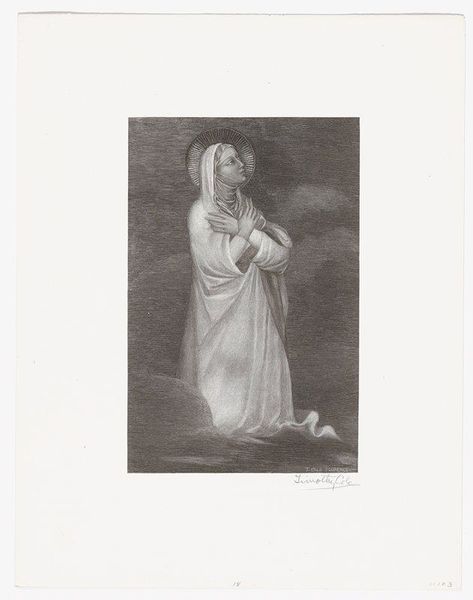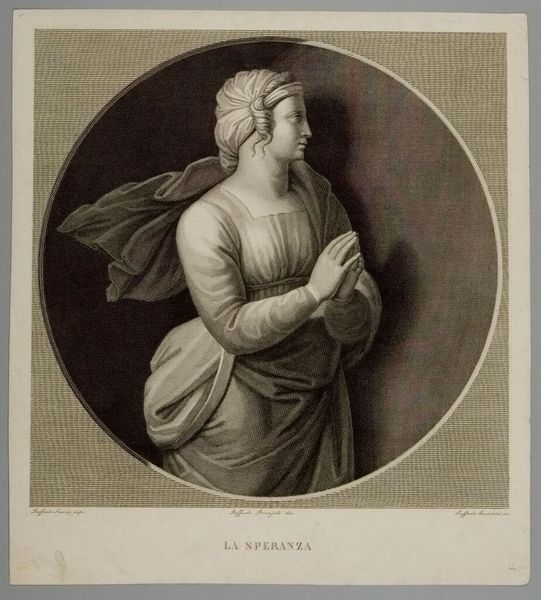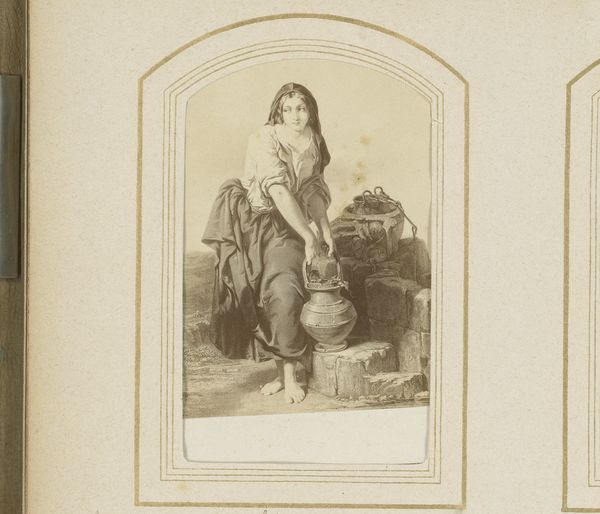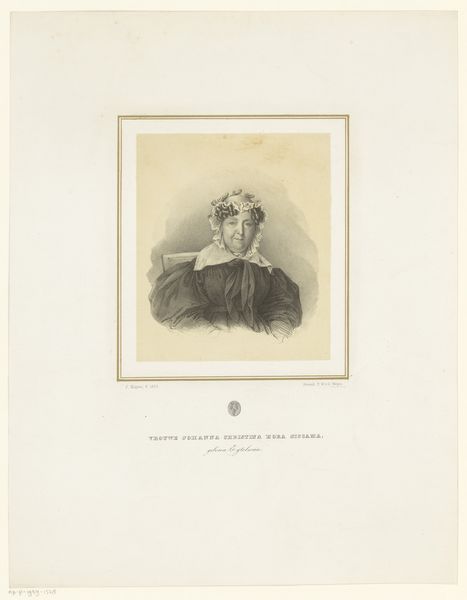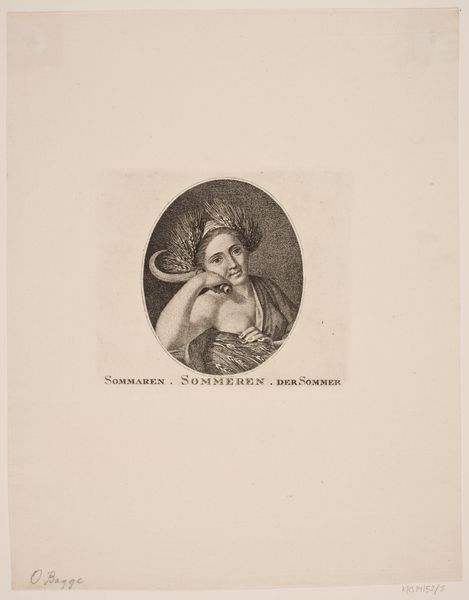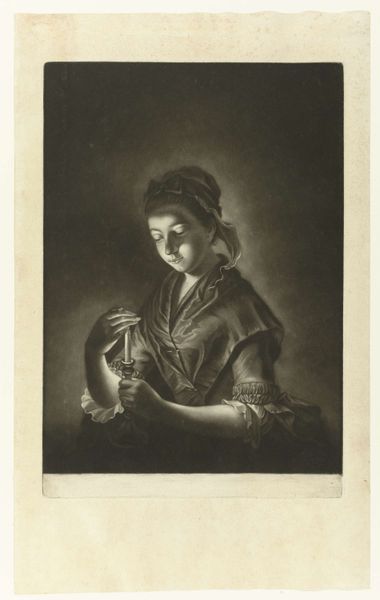
Dimensions: height 419 mm, width 342 mm
Copyright: Rijks Museum: Open Domain
Curator: At first glance, this portrait of a woman reading conveys such a strong feeling of quiet introspection, doesn't it? Editor: Absolutely. The light seems to emphasize her face, but she looks tired, like the activity might require too much focus. Is she well? Curator: This is an engraving by Willem (I) Steelink, known as "Fantaserende vrouw", which translates to "Dreaming Woman" or "Fantasizing Woman" dating to somewhere between 1836 and 1913. Steelink, deeply embedded in academic art and the Romanticism movement, often explored themes relating to literature, emotions and society, here using print as a popular medium. The use of such popular printmaking is particularly striking here. Editor: The choice of engraving seems critical to the wider distribution of images like these at the time. To what extent were such portraits like commodities traded for wider appeal, I wonder, when a certain taste was developing through increased access for the rising middle classes. What stories did such images hope to reflect and perhaps normalise for such a vast market? Curator: Precisely. Engravings made art more accessible, shaping public perceptions of beauty, status, and gender roles. The level of detail achieved with the medium creates a texture, almost like fabric. It contrasts really nicely with the smoothness of her skin. This focus on tactile materials invites us to reflect on our sensory interaction with printed materials. Editor: Looking closer at how she rests her head, one may be interested in the costuming in the picture itself. Are there particular details relating her clothing, the beads, perhaps to particular classes of woman with specific interests at the time? Curator: It's a lovely insight; these features indeed represent access to certain markets or a statement relating to social aspiration. I believe Steelink has represented certain aspirational materials as available or worn through the popular availability of print, where printmaking could bring otherwise rare cultural symbols closer to other classes of person. What this image symbolises as available for consumption by all is very strong. Editor: Ultimately, that tension is the heart of its historical relevance: art democratized through reproducible mediums, reflecting and shaping social realities in transformative ways. Curator: A fantastic, multifaceted reflection—it's fascinating to observe such changes captured so vividly across various eras!
Comments
No comments
Be the first to comment and join the conversation on the ultimate creative platform.
